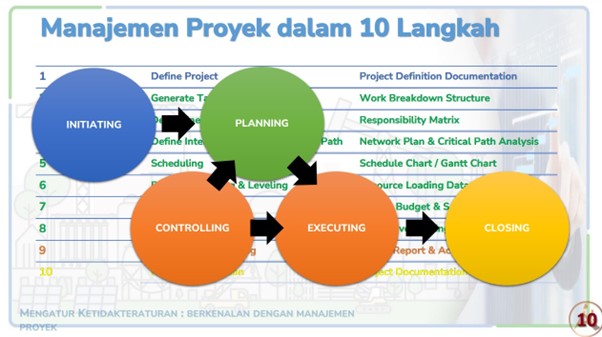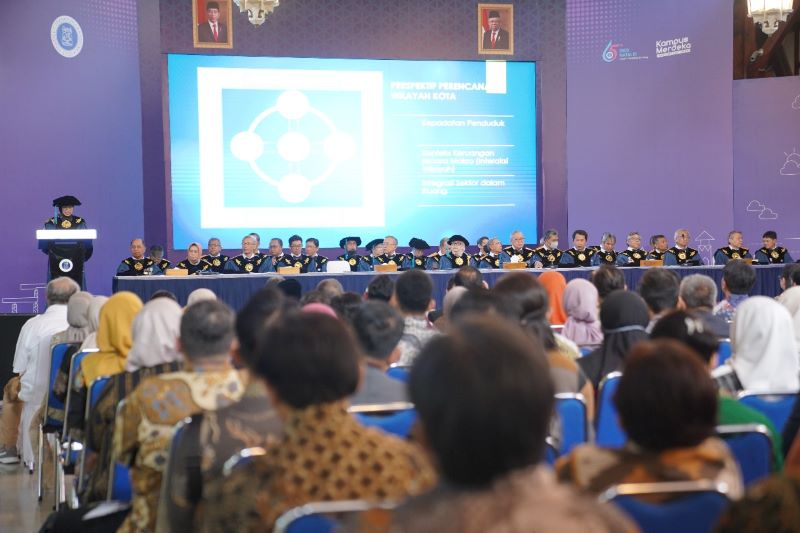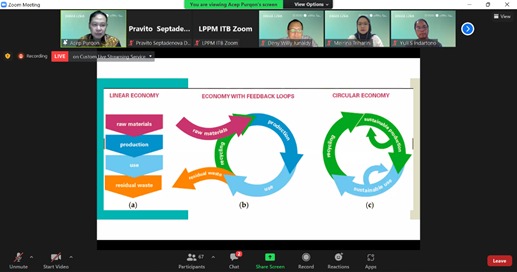Exploring Project Management and Problem Solving in Industries with HMPG ITB
By Adi Permana
Editor Adi Permana

BANDUNG, itb.ac.id – As future engineers working in various industries, students majoring in chemical engineering, such as food engineering, bioenergy engineering, and chemurgy engineering, are expected to possess a solid understanding of project management principles to address challenges encountered in large-scale industrial projects effectively. However, many who are active on projects still lack a comprehensive grasp of project management concepts.
To share the knowledge of project management, the ITB HMPG (Food Engineering Student Association) held a seminar titled "Training Center Vol.1: Managing Irregularity" on Saturday (15/4/2022), discussing project management and problem-solving in the industrial world. The speaker for the seminar was the Account Manager of Petrolog Indah, Ir. Adri Kristian, S.T., M.T. He was also an alumnus of the ITB Chemical Engineering study program, He is also a member of the ITB IA-TK (Chemical Engineering Alumni Association).
"Projects are specific, dynamic, gradual activities that are not done regularly and possess several limitations," Adri explained. Its management uses knowledge, expertise, and resources to fulfill objectives. "Project management is, in fact, more crucial than the execution.”
Various examples of projects that can be found in everyday life include repairing machines and organizing weddings. On the other hand, industrial-scale projects are related to EPCC (Engineering, Procurement, Construction, and Commissioning), such as the construction of power plants that require many engineers from various disciplines and many resources.
Various phases must be understood and completed when planning a project. The first phase defines a project to determine the targets, limits, and strategies. This phase requires comprehensive discussion between stakeholders and the project team. After explaining the project's main idea, the team must complete the necessary tasks depending on the parties involved. “The project must be broken down into smaller parts called activities,” Adri added.

The next phase is determining the roles and responsibilities of each personnel. One method for carrying out this phase is the responsibility matrix, which lists all the needs and feasibility of the activities as well as the roles and responsibilities of each member. The role division can be clearly defined using the RACI (Responsible, Accountable, Consulted, Informed) chart, followed by mapping out the interdependencies between tasks to identify the relationships between the activities.
This phase helps to shape the project’s workflow to ensure efficiency and systematic execution; project managers can identify which activities can run by themselves and which can be done simultaneously with others.
Project managers must also perform a critical path analysis to allocate the limited resources in each activity. Performing a critical path analysis to allocate the limited resources in each activity helps in achieving sequential targets effectively. With critical paths, project managers can create precise schedules for the assigned project. Gantt charts are a widely-used example showing each activity's duration, relationship, and critical ways.

After arranging the project’s schedule, it is adjusted according to the resources required- this procedure is called resource-leveling. Some general guidelines in resource leveling are as follows: non-critical activities can be postponed if they do not cause the activity to become critical; other resources can be used if the required resource Is unavailable; and negotiation with stakeholders is encouraged to postpone deadlines. After recording the resources, a budget plan is made in consideration of the price of the resource straight from the source.
After planning and assembling the project’s framework, project managers must develop a comprehensive risk management plan to anticipate and mitigate potential risks. "Risk management is important in project management so that the team is prepared to face all possible scenarios that may affect the project’s cost, quality, and time," Adri elaborated. Monitoring of the project is done with the documents that have been compiled during the previous phases.
Aside from the explanation, Adri also presented several case studies of an industry’s project plans and schedule, complete with restrictions and deadlines to be arranged by the participants. Through this case study, participants can learn to solve the problems in projects and present them to others.
"The keys to project management are its design, communication, and efficiency. A well-designed plan is crucial, as failure to plan effectively can lead to failure overall. The expertise of a project manager is also determined by how quickly they respond to deviations that happen in their original plan," Adri concluded.
Reporter: Yoel Enrico Meiliano (Food Engineering, 2020)
Translator: Ruth Nathania (Environmental Engineering, 2019)

.jpg)
.jpg)
.png)
.jpg)
.jpg)


